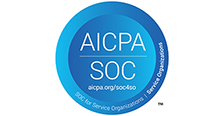
Resources
-
January 6, 2014
Kachinski Resurrected? PA Supreme Court Increases Burden On Employers
Written By: John J. Muldowney
On November 21, 2013, the Pennsylvania Supreme Court in Phoenixville Hospital v. WCAB (Shoap), 2013 WL 6132096, __ A.3d __, issued a decision which redefines the burden of proof on employers seeking modification of workers compensation benefits. In doing so, the Court reversed the decision of the Commonwealth Court in Phoenixville Hospital v. WCAB (Shoap), 2 A.3d 689 (Pa. Cmwlth. 2010) and set forth a burden of proof which appears inconsistent with the Pennsylvania Workers’ Compensation Act, as amended by the 1996 reforms commonly referred to as “Act 57”. As noted by the dissenting opinion, the Pa. Supreme Court’s decision undermines the legislative intent of Act 57 to reduce the burden on employer’s seeking modification and “circles back” to the pre-Act 57 standards set forth by Court in Kachinski v. WCAB, 532 A.2d 374 (Pa. S.Ct. 1987).
Prior to Act 57, the specific elements of an employer’s burden of proof in obtaining a modification of the benefits of an injured employee were not defined by statute. To redress this gap in legislation, the Pa. Supreme Court set forth specific elements of such burdens of proof in its landmark case, Kachinski v. WCAB, 532 A.2d 374 (Pa. S.Ct. 1987). Under Kachinski, and its progeny, an employer seeking modification of an injured worker’s benefits was required to (1) to produce medical evidence of clearance of a change in a condition; and (2) produce evidence of referral to a “then open job” within the occupational category for which the Claimant was given medical clearance. The Claimant, in turn, was required to follow through on the job referral in “good faith”. However, should the referral fail to result in a job then the Claimant’s total disability benefits would continue and the employer’s attempt in modification would fail. The Kachinski regime, thus, put the pre-injury employer in the position of a lifetime employment agency for an injured worker who had not fully recovered from his/her work injury.
In 1996, the Pennsylvania legislature, through Section 306(b)(2) of Act 57, filled the statutory gap and removed the Kachinski burden of proof as to job availability. In particular, the amended section 306(b)(2) provides for modification of benefits on the basis of “earning power” as determined by “expert opinion evidence” that the employee is “capable” of performing “employment which exists in the usual employment area”. (underline added). As further defined by the statute such expert evidence is to include job listings within the agencies of the department, private job placement and advertisements in the usual employment area. Typically, such evidence is presented in the form of vocational expert testimony concerning labor market surveys identifying jobs existing in the usual employment area.
The underlying litigation in Shoap followed the typical pattern with the employer presenting evidence of the Claimant’s increased earning power through expert opinion based on a labor market survey. Ms. Shoap, however, asserted that the jobs in the labor market survey did not “exist” because she applied for the referenced jobs and they were not made available to her. In applying section 306(b)(2) of the Act, as amended by Act 57, the Pennsylvania Commonwealth Court in Phoenixville Hospital v. WCAB (Shoap), 2 A.3d 689 (Pa. Cmwlth. 2010), held that Shoap’s failure to obtain employment despite her application for such jobs was “immaterial” to the determination of Claimant’s earning power.
In a 4-2 decision, the Pennsylvania Supreme Court reversed the holding of the Commonwealth Court, with a remand for determination consistent with its opinion. Phoenixville Hospital v. WCAB (Shoap), 2013 WL 6132096, __ A.3d __. The Pennsylvania Supreme Court held that “evidence that the Claimant pursued but failed to obtain gainful employment with the employers identified by the expert witness is undeniably relevant to rebut the employer’s argument that the positions identified were proof of the potentiality of a Claimant’s substantial gainful employment”. In reaching this conclusion, the Court latches onto the term “exists” under section 306(b)(2), and thus concludes that a job does not exist if the job “was already filled by the time the Claimant had a reasonable opportunity to apply for it”.
As noted by Justice Saylor in his dissenting opinion, the majority’s decision in Shoap, alters the burden on the employer of establishing employment in the relevant employment area towards an increased burden of “proving actual job availability to specific claimants”. Whether the Court’s decision in Shoap involves a complete return to the Kachinski regime remains to be seen. Arguably, Shoap is limited to allowing a claimant to defeat a modification petition by evidence that the “position identified by the employer’s expert witness was already filled”. Regardless, the majority’s holding in Shoap sets a dangerous precedent which suggests that, if not resurrected, Kachinksi remains a specter on the landscape of Pennsylvania Workers’ Compensation.
About Hill Wallack LLP
Founded in 1978, Hill Wallack LLP is a leading law firm with offices in Princeton and Morristown, New Jersey and Yardley, Pennsylvania. Our regional strength places us in an ideal position in today’s market. With 70 lawyers, our mid-market size allows us to provide sophisticated, high-level service to clients in a cost-efficient, responsive manner.
Our attorneys are called upon to tackle some of the toughest legal and business challenges. The firm represents businesses, nonprofit and government entities, and individuals in litigation, transactional and regulatory issues. The firm also includes those skilled in family law, trusts & estates, tax liability and other areas of individual service. For more information, please visit www.hillwallack.com.


